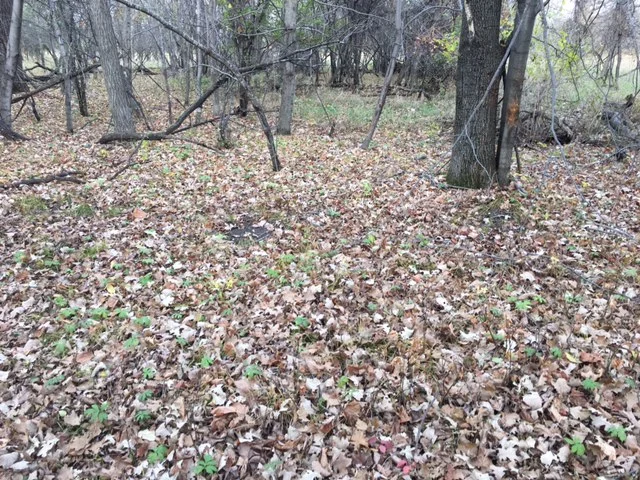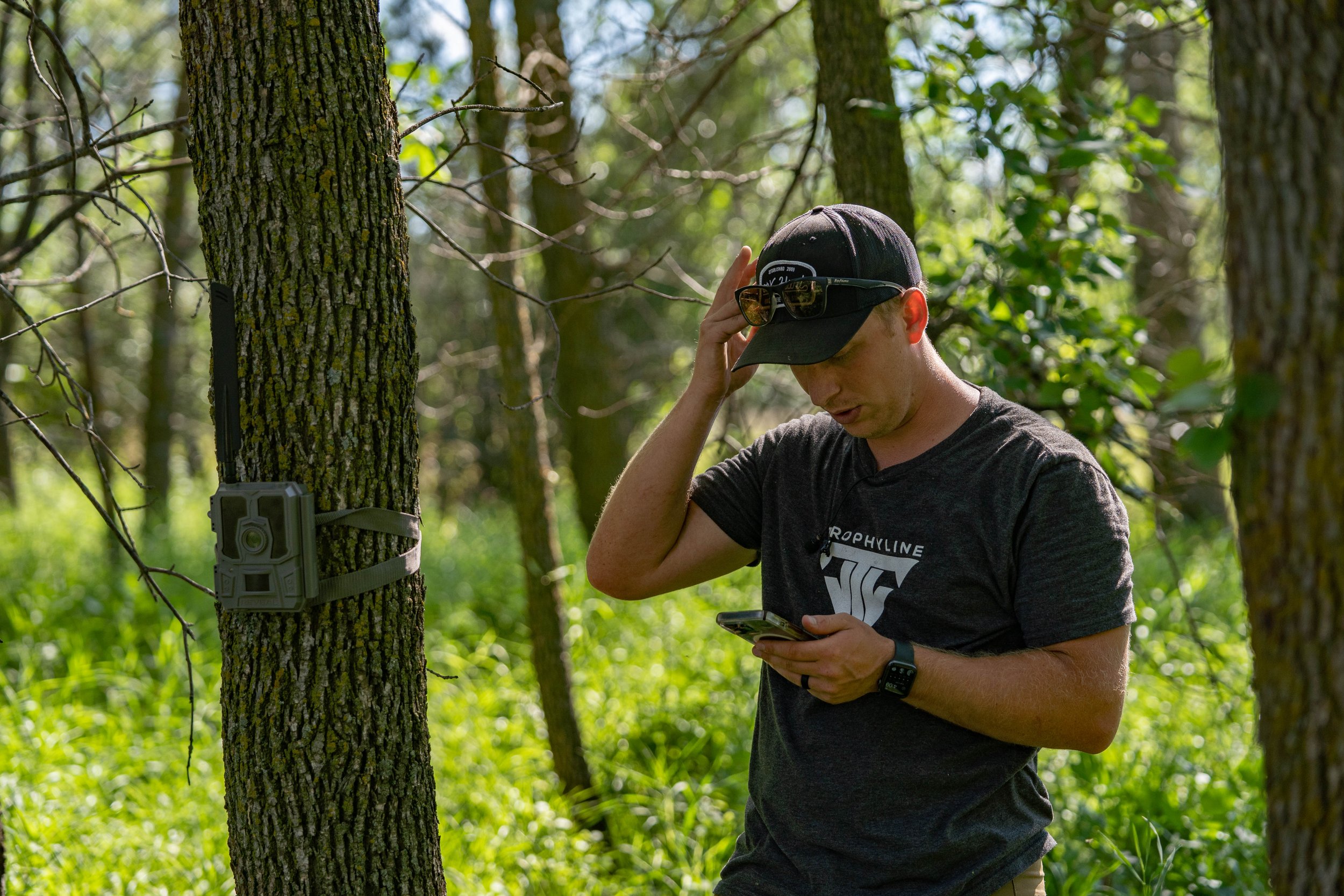By Alex Comstock
During the springtime and dog days of the summer, what do you find yourself doing a ton of? Scouting. And scouting some more, and then even some more. There is a boat load of scouting and preparation that goes into every deer season. And then once fall arrives, it's time to hit the woods and hunt. But, don't forget about that scouting, it is just as important as ever to be doing it during the season as well, or you just might miss out on that next opportunity at a mature buck.
Why Scout During The Season? Deer patterns are changing throughout the fall. Once bucks shed their velvet in early September, they practically become a different animal. Home ranges change, testosterone is starting to build, and green food sources are no longer green. This is a critical time of the year to re-locate bucks, and figure out which bucks moved off of your property, and which ones moved on to it.
Trail Cameras can help you identify new bucks showing up on a property after shedding velvet.
Right when you think you've got a buck patterned during September, the dreaded "October Lull" hits. Whether you choose to believe in the October Lull or not, no matter how you cut it, there are things changing within the daily life of a whitetail buck. I'm not one to tell you not to hunt during the first few weeks of October, but it is important to identify a few things.
Usually at this time of year a buck will be staying close to his bed to feed. If you observed him feeding in a soybean field during the summer/early season, he's probably not on that crop field anymore. If there are any acorns dropping nearby, there is a good chance he could be feeding on those. Long story short, a mature buck at this time of year doesn't want to travel far from his bed. That doesn't mean he won't move in daylight, but odds are he's not going to move far. If you can locate his feeding area and/or bedding area, you could have a shot of putting down a buck in mid October.
As October starts to wind down, bucks are getting wound up. The rut is right around the corner, which means bucks will begin to start moving more and further in daylight. New rubs and scrapes will be popping up everywhere. Once you get into November, the rut will be in full swing with bucks looking to breed those does. Sign will either be getting laid down daily or go dormat quick, and knowing what to look for this time of the year plays a huge role in success rates. If you're not out scouting this time of the year, you could miss out on some important intel.
Mid to late October, rubs and scrapes will start to show up everywhere.
Late season is very similar to early season. If you are out scouting food sources and locate a mature buck in a feeding area, there is a good chance you will be able to get on him late. When it gets cold in the late season, deer are controlled by their belly, and if you know where they like to satisfy their hunger, you'll be in a good spot.
How Do You Scout In-Season? Scouting during the season can seem a bit intrusive to some people and I understand that. But, there are ways to successfully scout in-season without screwing it all up.
Trail Cameras: Trail Cameras play a large part in my efforts of scouting during the season. In the early season, I place cameras up over food sources and in essence they do the scouting for me. If I have a shooter showing up in or close to daylight on a half regular basis, I might go in and try to kill him. If there is nothing showing up in a certain area, I'll just stay out. The same goes for late season. By getting trail cameras up on trails leading into and out of food sources, you can get a good idea what is in the area, and if there is anything worth hunting.
Trail cameras help me during October and November as well in a couple of different ways. First off, I like to have my cameras in funnels, pinch points, and on scrapes during this time of the year. I move almost all of my cameras on scrapes by the first week of October, and this helps me in two ways. If there is a buck that happens to be hitting a scrape in daylight, I will go in and hunt right over that scrape. That is less likely, but what is more likely is getting pictures of a buck hitting that scrape at night, and what that does for me is give me an idea of what bucks are in the general area, and how I might hunt them in and around the rut. The second major way trail cameras help me during this time of year isn't exactly for this season. I will scout out major rut funnels and areas I think a mature buck could be cruising, and then not check that camera until after the season. But the information those cameras pull will help me in future seasons. I have started believing more and more in annual patterns, and if you get pictures of a buck cruising a certain area on lets say November 5th and 6th, there is a good chance he will be doing the same thing in the same area the following year.
Want to learn more about how I use trail cameras? You can read more about my trail camera strategies in The Perfect Trail Cam Setup and Trail Cameras, Help or Hindrance?
Timing and Weather: Knowing when to scout is just as important as knowing what to scout. I almost exclusively do my knee deep scouting in-season during some type of inclement weather. Windy, rainy days are my favorite. If I am going to go into an area and being walking around looking for hot sign, I want to do it being the least bit intrusive. By doing it on a windy, rainy day, odds are most deer will be bedded, they won't be able to hear me walking around, and my scent will be at a minimum with the rain. If you have just a rainy day, or just a windy day those can be OK too.
What it all comes down to, is don't go stomping all over an area when it's still out and a gorgeous day. You don't want to hurt yourself when doing in season scouting, your trying to help yourself, remember that. If you think you might be pushing the envelope too much, don't do it.
Know What To Look For: It is absolutely paramount that you know what your looking for in relation to the time of year. For example, if you are doing a quick scout on November 12th, and notice a field edge full of scrapes, that doesn't necessarily mean a ton. There is a good chance that a majority of those scrapes were made back in October, and are dormant now. By that time of year, bucks will be either locked down with does or trying to be. Scout the does, because by then, the bucks will be where the does are.
On the other hand, if you are checking out a new area on October 12th, and find an oak flat that is dropping a ton of acorns, and you locate a rub line accompanied by a few scrapes, this could be something worth hunting. A buck may be bedded near the acorns, and making those rubs while headed to feed, or while back to bed. Knowing what to look for during certain times of the year can make all the difference.
Conclusion: Often, scouting gets overlooked during the actual hunting season. You don't have to go out and scout all the time during the season, in fact overkill can be a negative. What you should do though, is be keeping tabs with what the deer are doing during the season, because it is constantly changing. If you can keep up with them, and evolve as the season evolves, you will be putting yourself in a better spot to eventually meet up with a mature buck.


































